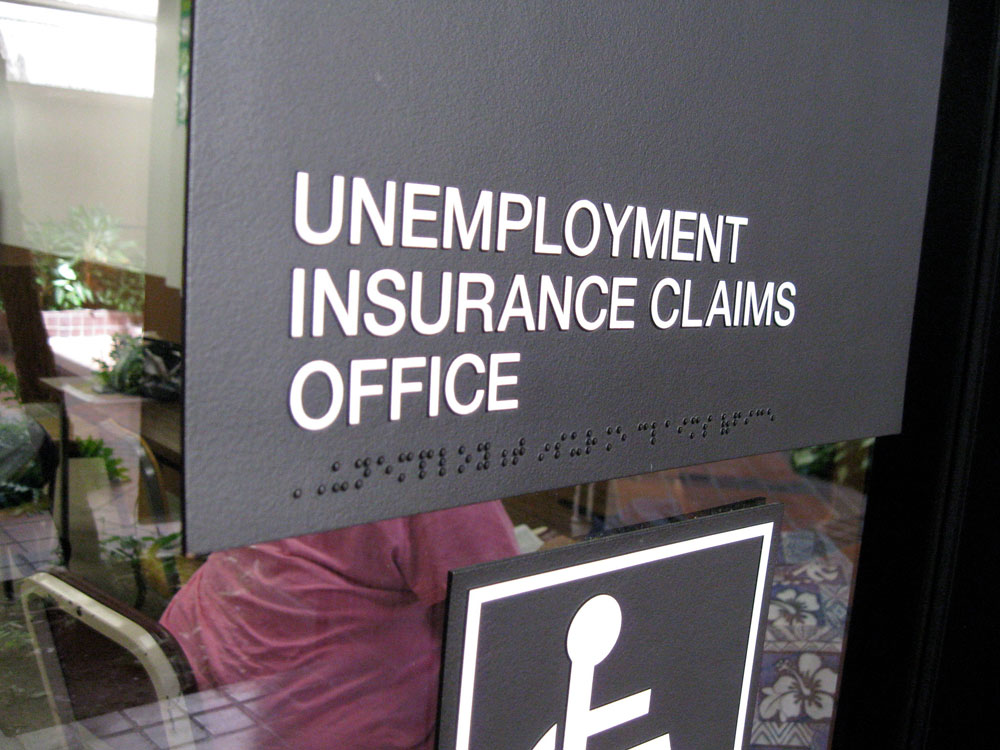
March 20, 2020; CNN, Colorado Sun, and New York Times
The highest week for jobless claims in post-World War history came during the recession of the early 1980s. On the week ending October 2, 1982, a record 695,000 filed unemployment claims. Last week, new federal unemployment claims were 281,000. That number reflects “a 30 percent increase in unemployment claims…one of the largest spikes on record,” writes Patricia Cohen in the New York Times.
But when federal numbers are released this coming Thursday, that 30-percent increase will seem trivial. Indeed, CNN reports that the investment firm Goldman Sachs has already offered a prediction: 2.25 million. In other words, Goldman is predicting a 700 percent increase from the week before and more than triple the highest number of new weekly unemployment claims ever recorded.
Annalyn Kurtz of CNN adds that Goldman’s estimate “is based on news reports of an unprecedented surge in layoffs early in the week. Airlines, restaurants, hotels, sports events and retailers are all struggling to cope with a sudden drop in revenue, as people stay home to prevent the spread of the virus.”
We could have more accurate numbers, but Cohen reports that the Trump administration has requested that state labor officials “delay releasing the precise number of unemployment claims.” Still, some data are coming in. The picture they paint is disturbing.
For instance, Tamara Chaung in the Colorado Sun reports that Colorado’s “unemployment portal got slammed with 180,000 attempts by people trying to file for benefits online this week during a period where businesses were forced to limit or close down to stop the spread of the contagious COVID-19.” The number of claims the week before? Seven thousand.
Sign up for our free newsletters
Subscribe to NPQ's newsletters to have our top stories delivered directly to your inbox.
By signing up, you agree to our privacy policy and terms of use, and to receive messages from NPQ and our partners.
According to the Colorado state office, only 26,000 to 28,000 were able to file claims last week, a fourfold increase from the previous week. However, call center volume increased 9,900 calls from 99,000, a tenfold climb, suggesting that even more claims will likely be completed this week.
Other states have similar numbers. Kurtz writes that, “Florida’s Department of Economic Opportunity received 76,000 calls between just Monday and Wednesday, up from about 28,000 calls for the entire week before…and on Thursday, New York State’s Department of Labor had received 159,000 calls, all before noon. Usually the agency gets about 10,000 calls a day.”
Tami Luhby and Kelly Mena, also reporting for CNN, provide additional figures that confirm this trend. They note that Illinois, between Monday and Wednesday received over 64,000 unemployment benefit claims, more than ten times the 6,074 claims filed during the same time period in 2019. Ohio reported 111,000 filings, up from 3,900 the week before. In Oregon, after restaurants were closed by the governor’s order, initial claims jumped from 800 the day before the order to 18,500 the day afterward.
Could it get worse? Well, as NPQ noted last week, the longer the shutdown lasts, the larger the impact. Literally tens of millions of jobs are at risk. Nonprofits that seek to provide social services are about to see a wave of impact unlike any other our sector has experienced in modern times.
Government, of course, can act to cushion the blow. Since the government ordered the shutdown of businesses to retard the spread of the coronavirus, the government has a uniquely high level of responsibility to respond. One tool could be for the federal government to boost unemployment insurance payments. Writing in USA Today, Mark Zuckerman and Andrew Stettner of The Century Foundation note that even when workers qualify for unemployment insurance checks, they will, on average, receive only 45 percent of what they earned, which for restaurant workers in New York state would mean an average payment of $245 a week, hardly adequate in many places even to pay rent. Zukerman and Stettner advocate increase unemployment payments for the emergency period to cover full wages up to the median wage level.—Steve Dubb













